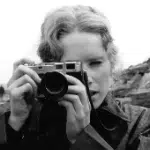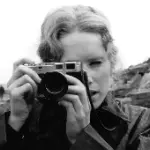From depicting the pornography industry in "Boogie Nights" to exploring post-World War II trauma and scientific teachings in "The Master" and the world of fashion design in "Phantom Thread," and from characters on the fringes in "Inherent Vice" to portraying corporate titans in "There Will Be Blood," P.T. Anderson's influence and range in terms of both style and subject matter are virtually unparalleled in contemporary cinema.
Over the past two decades, P.T. Anderson has gradually forged his own distinct style. His early films were marked by chaos and dramatic flair, employing extreme techniques and performances. His later works maintain a similar intensity, but often delve more into the internal, the spiritual, rather than the physical. His directorial style has also matured and become more restrained.
Each of P.T. Anderson's works stands as a contemporary masterpiece, having garnered recognition at major film festivals. His films feature a profound exploration of human nature combined with impeccable filmmaking techniques. Without a doubt, P.T. Anderson is one of the greatest contemporary directors.

Within P.T. Anderson's films, there are numerous iconic moments where he masterfully blends the extraordinary with the everyday, showcasing his exceptional filmmaking prowess. Anderson leverages narrative contrasts, framing, and lighting to underscore the core of his films. Today, we'll delve into how these techniques contribute to the brilliance of P.T. Anderson's movies.
The Power and Vulnerability of Framing
"The Master" stands as one of P.T. Anderson's most visually stunning films. Shot with a 65mm lens, it offers a richness and clarity that captivate the viewer. Set against the backdrop of 1950s America, the film revolves around Lancaster Dodd, the founder of a movement known as "The Cause," and his troubled assistant, Freddie. As the influence of the movement grows, Freddie begins to question its teachings. In 2012, the film received the Silver Lion Award at the 69th Venice International Film Festival.
The following scene exemplifies P.T. Anderson's mastery of framing. John openly challenges Dodd's teachings in front of others, causing Dodd's demeanor to shift from confidence to anger. The visual composition accentuates this power struggle.

As Dodd speaks, the camera frames him in a medium close-up, placing him at the center of the frame. When he addresses the court, he becomes the focal point of everyone's attention. On the other hand, John starts as a relatively insignificant figure; his initial shot is a medium shot with part of him obstructed by Dodd and his wife, Peggy. It's only later, as Dodd becomes engaged in the conversation, that John's frame opens up.

Dodd is confined to a medium shot, forced to turn and look at John behind him, with a portion of him obscured by foreground props. In this transition of shots, the power dynamics shift noticeably. Dodd's vulnerability becomes apparent, while John, who was initially blurry and insignificant, takes charge of the conversation. Dodd's frame diminishes, while John's presence grows in the frame. Eventually, Dodd stands up, turns around, and confronts his accuser, attempting to regain control.

However, in the subsequent shots, John advances to a tighter medium close-up, his presence now imposing and commanding. Dodd's authority is challenged, as someone previously inconsequential and anonymous initiates this confrontation. This scene ultimately concludes with John gaining the upper hand. Throughout this sequence, the carefully selected framing choices effectively convey the subtle shift of power in the scene, even though it's a dialogue between just two individuals—an intricate detail that might go unnoticed by the average viewer but is vividly portrayed on screen.
Providing Abundant Scene Information
The opening long shot of "Boogie Nights" is undeniably breathtaking. The camera boldly displays the film's title, followed by a dynamically angled shot of a sign outside a movie theater. It informs the audience that they are in Reseda, the heart of Southern California's adult entertainment industry. However, the floating, almost ethereal camera movement makes it feel less like a mechanical recording and more like an out-of-body experience.
Similar to segments in "Hard Eight," this cinematographic style draws inspiration from Martin Scorsese's "Goodfellas" and "Casino," as it immerses the viewer directly into the historical setting. However, a critical difference lies in Scorsese's camera pursuit of documentary-like realism, primarily achieved through explanatory voice-over, while Anderson plunges us headlong into a sensory overload of neon extravagance.
The three-minute sequence introduces eight characters, and while it may initially seem overwhelming, it replicates the feeling of being at a party where you don't need to know everyone's name.
P.T. Anderson's camera is exuberant, attempting to capture all the people and activities present simultaneously. Viewers might feel overwhelmed at first, but a closer look reveals that nearly every short segment has a camera guiding the audience's attention to the character or area of interest. Sometimes, lighting serves as a cue, with a spotlight highlighting the arrival of a character. Despite some panoramic shots, this opening remains a linear progression.
This sequence culminates in a dual climax of action and stillness. The camera initially pans from the side of the dance floor, where a roller girl energetic dances, to a slowed-down focus on a young Eddie Adams, backlit, with the anticipation of his youthful, handsome face hidden in plain sight, ready to burst onto the screen with surprise.

Much like in many films of the "coming of age" genre, the camera is in constant motion, revealing the chaotic and tense lives of these adult entertainment actors. "Boogie Nights" is filled with similarly spectacular camera movements, and just when you think you've seen the coolest shot in cinematic history, Anderson has unveiled an even more remarkable one.
Let's take a closer look at the following shot. It may not be as glamorous, but it works miracles in shaping the film's protagonist, Eddie Adams. This film, in terms of its cinematographic style, provides ample support for character development and the narrative itself.
After the glitzy nightclub scenes, Eddie Adams returns home. In this shot, Eddie walks into his room and starts undressing. As he does so, the camera performs a 360-degree pan within the bedroom.

What's the significance of this shot? Its purpose is to showcase Eddie Adams' life through his surroundings. He's a musician who loves fast cars and beautiful women, and is an ardent fan of Bruce Lee. If he agrees to start making adult films with Jack, all of this awaits him. He'll get the car, he'll get the girl, and he'll become the next action superstar.
This isn't merely foreshadowing; it’s character development. In this shot, we witness Eddie Adams waits for this opportunity. Some characters in the first act don't know what they want, but Eddie Adams clearly does. So when the time comes for him to make the choice, the character's decision has already been seeded.
This scene serves to build tension through editing, but it also informs the audience about Eddie Adams' character and the challenging decision he's about to make. The character arc of Sydney has been completed within this scene, allowing the audience to empathize perfectly with his psyche.
Building Suspense and Character Through Editing
P.T. Anderson's use of editing to create suspense is quite straightforward. It involves controlling time and employing pauses to heighten the sense of anticipation. But what if you could edit suspense and character simultaneously? P.T. Anderson accomplished this feat remarkably in his debut film, "Hard Eight," where he intertwined the suspenseful progression of the plot with the character's inner struggles.
In the film's climax, Sydney faces a crucial decision: to kill Jimmy. Sydney breaks into Jimmy's house, locates his gun, and waits for Jimmy to return home.

Sydney waits anxiously in the darkness, eyes fixed on the front door, and three scenes are intercut. From the moment he sits down until the first shot is fired, over three minutes elapse—a notably long duration of such a tense event.
There's also a deliberate contrast between each scene. Sydney anxiously awaits, while Jimmy engages in a frantic gambling spree, and John and Clementine enjoy a peaceful drive. This juxtaposition of fast and slow pacing creates tension and anticipation.

However, within Anderson's shots, the use of suspense doesn't end there. The construction of the scenes also takes into account the characters' psychological development. This entire sequence revolves around Sydney and his state of mind. Sydney sits in a chair, and the camera slowly zooms in on him. Why is this done? To emphasize his inner turmoil. He's contemplating the decision he's about to make, weighing the consequences.
In fact, during this scene, when the audience sees Jimmy at the casino and John and Clementine in the car, none of these events are actually happening in the narrative; they are all products of Sydney's imagination. Sydney envisions Jimmy celebrates wildly while gambling and imagines John and Clementine ultimately finding peace and safety. Sydney holds all of this in his mind, solidifying his resolve.
This scene is edited to create suspense, but it also lets the audience understand Sydney's character and the difficult choice he's about to make. The character arc of Sydney has already been completed within this scene, allowing the audience to empathize perfectly with his psyche.
P.T. Anderson's cinematic techniques are a testament to his prowess as a director. He combines powerful framing, immersive scene construction, and effective editing to engage audiences emotionally and intellectually. His ability to seamlessly intertwine character development and suspense within his shots is a hallmark of his unique storytelling style, making him one of the most exceptional directors of our time.










































Compartilhe sua opinião!
Seja a primeira pessoa a iniciar uma conversa.